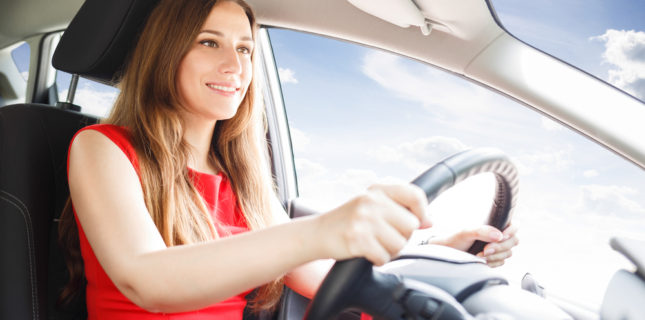
Cars & Cataracts
According to Prevent Blindness, one in 49 Americans is affected by a cataract that interferes with vision. And 400,000 new cases are diagnosed each year. In fact, The National Eye Institute reports that the number of Americans with cataracts will more than double by 2050—from 24.4 million to 50 million.
Tip: “Sunglasses of all kinds will help, but side coverage—such as wrap styles—is imperative for fuller protection.”
Research published in JAMA Ophthalmology earlier this month found that in North America, cataracts and skin cancers appear more often on the left side of the face than elsewhere. The report states the reason—UV exposure from a car’s side windows. One way to help? Recommend—or better yet, prescribe—wrap sunwear or any sunglasses that offer side protection.
Here are some recent research findings on the subject, as well as more about why side sun protection is so important.
- The finding: A study of patients with skin cancer found that cancer on the left side of the body is much more common among people who spend a lot of time driving.
- The reason: Asymmetrical UV exposure when the driver is positioned on the left side of the car. In countries where the steering wheel is on the right side, like the UK and Australia, the findings are just the opposite—more skin cancers and cataracts are reported on the right side of the face.
- The source: Some side windows offer more protection than others. Generally speaking, Honda’s score high and VW’s low.
- The culprit: UV-A rays coming through unlaminated side windows that, though weaker than UV-B ones, are the rays associated with cataracts and long-term skin problems.
- The levels: Front windshields provide “a high and consistent level of protection from UV-A,” ranging from 95% to 98%. The level of protection from UV-A in side windows, however, is all over the map–from 44% to 95%.
- The factors. According to the study, the level of UV-A is determined by a number of factors, including “glass type, glass color, and the interleave between glass and glass coating.”
- The answer: UV-absorbing glass. The study reports that there is a 93% reduction in skin cell death when UV-absorbing laminated glass is installed on the driver’s side of the car.
- Your message: Tell patients about side-windshield exposure and that it is, therefore, important to protect both their skin and eyes when they’re inside a car, not just when they’re outdoors. And, share with them that this is one more reason why regular eye exams are so important.
- The product: Sunglasses of all kinds will help, but side coverage—such as wrap styling—is imperative for fuller protection.
Do you already explain to patients why sun wear is as important behind the wheel as it is in the great outdoors? If so, tell us how and where your practice addresses the subject—in the chair or in the dispensary? Join in the conversation on Facebook here.
Comments are closed.







